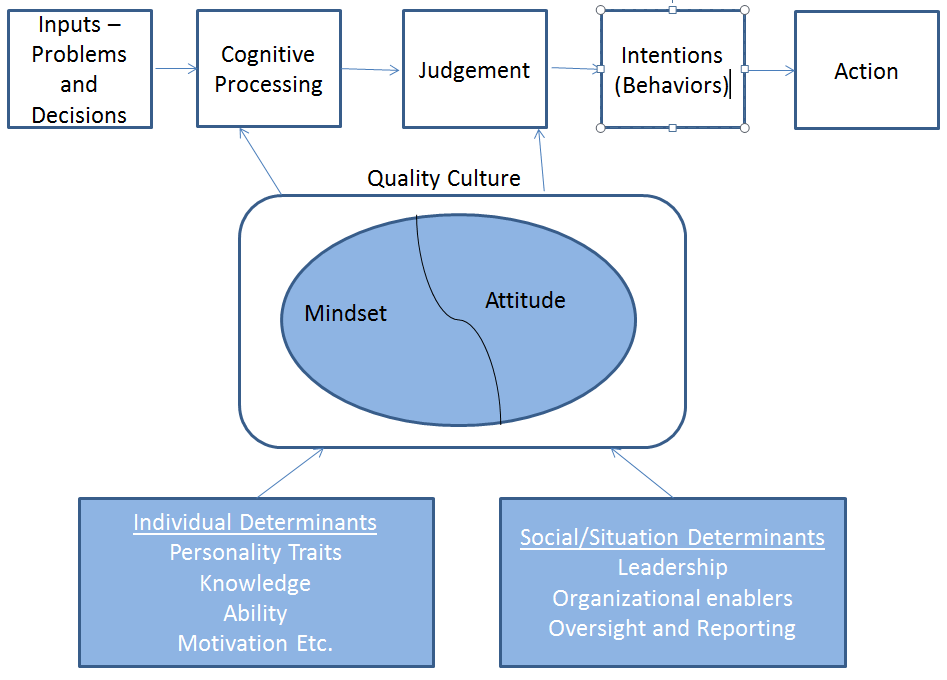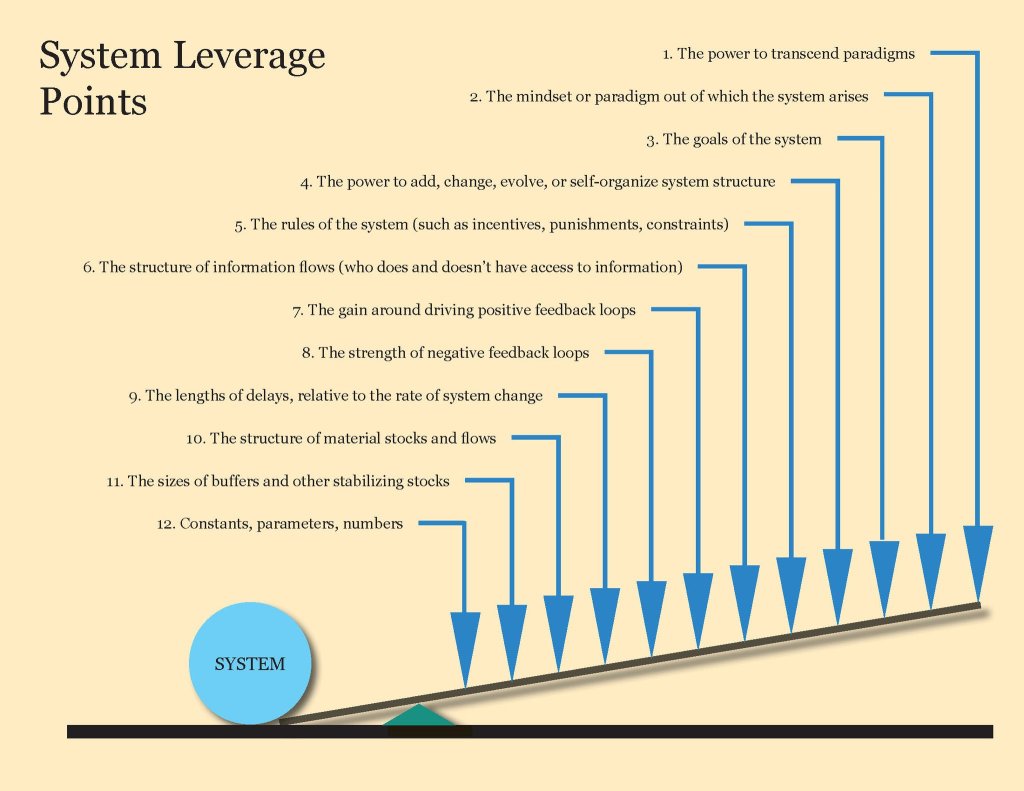Mindsets are lenses or frames of mind that orient individuals to particular sets of associations and expectations. Mindsets help individuals make sense of complex information by offering them simple schematics about themselves and objects in their world. For employees, mindsets provide scaffolding for understanding the broad nature of their work. Mindsets can be intentionally and adaptively changed through targeted interventions, so the goal is to build the processes to assess, monitor and shape as part of our quality systems.
Attitudes are the beliefs and feelings that drive individuals’ intentions and actions. Attitudes are the lens through which individuals make sense of their surroundings and impart consistency to guide their behavior .

Mindset influences attitudes, which influence behaviors, which influence actions, which influence results, which influence performance. And performance leas to changes in mindsets, and is a continuous improvement loop.
Since behaviors drive the actions we want to see, they are often a great pivot point. By thinking and working on mindsets and attitudes we are targeting the fourth and second leverage points.

Another way to think about this is we are developing habits. The same three factors apply:
- Start small: If you have ever tried to tackle multiple resolutions all at once, you know it is next to impossible. Often, the habits will lack cohesion with one another, leading to more stress and less progress. The cognitive load increases, and the brain processes things in a more scattered, less congruent manner. It’s better to focus on one new habit at a time.
- Enact the new habit daily: We can’t predict how long a specific habit will take to form, but all the research I’ve seen indicates that the more often people account on the new behavior, the more likely it is to become routine.
- Weave into existing processes: When we blend the new behavior with current activities, it’s easier to latch on to, which make sit become an unconscious action more quickly.
Habits are contagious within social contexts, but scaling positive pressure on an organization level is a big challenge.
Another way to view this is in the framework of experiences, build beliefs, which lead to actions and give us results. By building this into our systems we can make sure the appropriate processes are in place to make sure these new habits stick. Building a quality culture is a multi-year journey requiring incremental, layered and additive formation.
This formation comes through building the mindsets that lead to the behaviors we want to see. Following the ISPE’s recommendations there are four good behaviors we can target (these are not the only ones nor are they exhaustive).
- Accountability: Employees consistently see quality and compliance as their personal responsibilities. Establishing clear individual accountability for quality and compliance is a foundational step in helping shape quality mindset and cultural excellence. Accountability should be communicated consistently through job descriptions, onboarding, current good manufacturing practice (cGMP) training, and performance goals, and be supported by coaching, capability development programs, rewards, and recognition. Leaders should hold themselves and others accountable for performing to quality and compliance standards
- Ownership: Employees have sufficient authority to make decisions and feel trusted to do their jobs well. Individual ownership of quality and compliance is a primary driver for shaping quality mindset. When individuals are fully engaged, empowered, and taking action to improve product quality, organizations typically benefit from continuous improvement and faster decision-making.
- Action orientation: Employees regularly identify issues and intervene to minimize potential negative effects on quality and compliance. Establishing the expectation that individuals demonstrate action orientation helps shape quality mindset and foster cultural excellence. Leaders should promote and leverage proactive efforts (e.g., risk assessments, Gemba walks, employee suggestions) to reinforce support for the desired behavior. Additionally, it is important that rewards and recognition be aligned to support proactive efforts, rather than reactive fire-fighting efforts.
- Speak up: Employees are not afraid to speak up, identify quality issues, or challenge the status quo for improved quality; they believe management will act on their suggestions. Empowering individuals to speak up and raise quality issues help foster quality mindset. Leaders should support this by modeling the desired behavior, building trust, and creating an environment in which individuals feel comfortable raising quality issues, engaging front-line personnel in problem solving, and involving employees in continuous-improvement activities.
Creating a high level action plan of experience -> Target Belief -> Target Action ->Target Result might look like this:

Sources
- Aguire, D., von Post, R & Alpern, M. (2013). Culture’s role in enabling organization change. PWC
- Ajzen, I. (2005). Attitudes, personality and behavior. (2nd ed.). Berkshire, GBR: McGraw-Hill Professional Publishing
- Ball, K., Jeffrey, R.W., Abbott, G., McNaughton, S.A. & Crawford, D (2010). Is Healthy behavior contagious: associations with social norms with physical activity and healthy eating. International Journal of Behavioural Nutrition and Physical Activity, 7 (86)
- Fujita, K., Gollwitzer, P. M., & Oettingen, G. (2007) . Mindsets and pre-conscious open-mindedness to incidental information. Journal of Experimental Social Psychology, 43(1), 48-61.
- Gollwitzer, P. M. (1990). Action phases and mind-sets. In E. T. Higgins & R. M. Sorrentino (Eds.), Handbook of motivation and cognition: Foundations of social behavior, Vol. 2, pp. 53-92). New York, NY, US: The Guilford Press.

This web site definitely has all the information and facts I wanted concerning this subject and didn’t know who to ask.
LikeLike
This is the perfect webpage for anybody who really wants to understand this topic. You realize so much its almost hard to argue with you (not that I really will need to…HaHa). You definitely put a fresh spin on a topic that has been written about for years. Great stuff, just great!
LikeLike